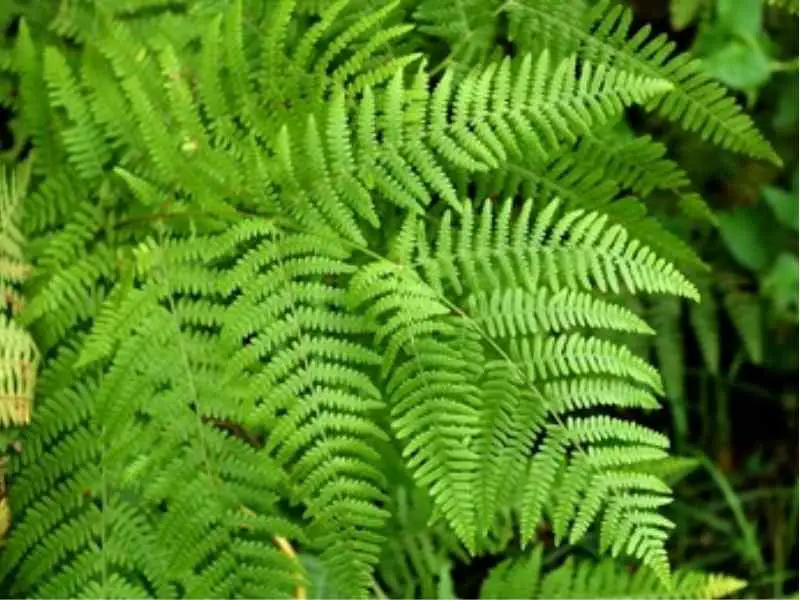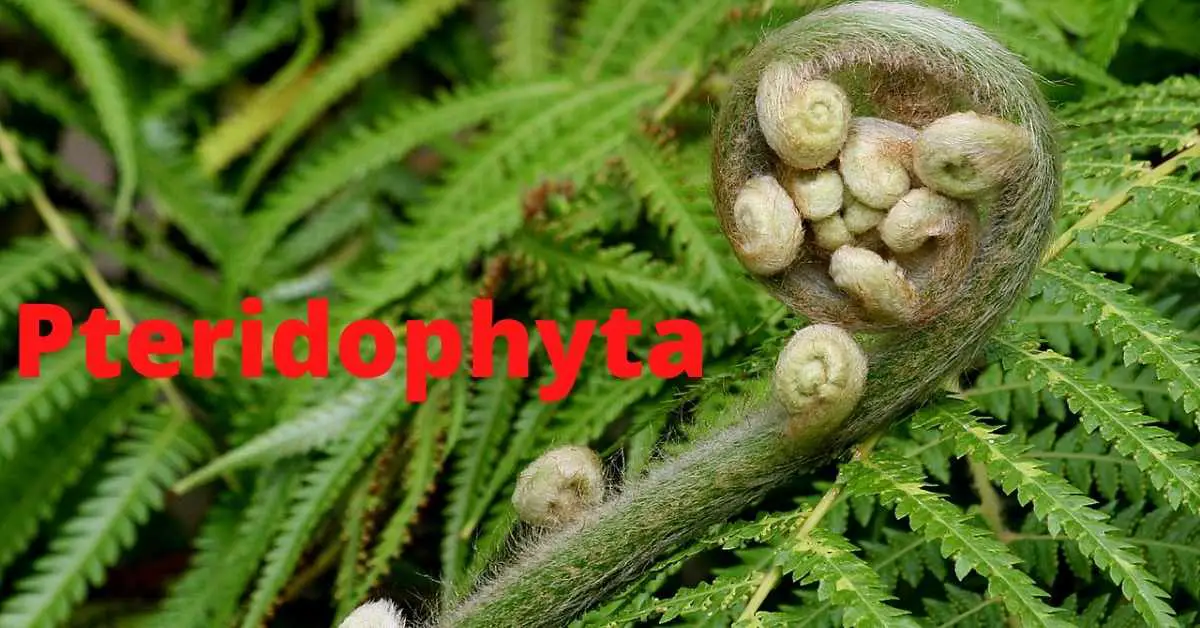Pteridophyta is a division of plant life that includes ferns, horsetails, and club mosses. These plants are characterized by having vascular tissue and reproducing via spores. These plants are also characterized by having roots, stems, and leaves, but no flowers or seeds. Today, there are an estimated 12,000 species of pteridophytes found on every continent except Antarctica. Pteridophytes are an ancient group of plants that first appeared on Earth during the Carboniferous period, about 350 million years ago. Ferns are an incredibly diverse group of plants, with some species growing to over 30 feet tall and others barely reaching an inch in height.

Pteridophytic plants are highly advanced than the Bryophytes. They are most advanced among the non-flowering groups, as they possess conducting tissue system. The term Pteridophyta derived from the two words, Pteris, feather and phyton, plant.
General Characteristic Features of Pteridophyta
• Pteridophytic plants are advanced than the Bryophytes but less advanced than gymnosperms.
• The plants belonging to Pteridophyta are essentially land plants which are found mostly in moist and sandy places. However, certain species may occur as epiphytes and a few are aquatic. They are distributed mainly in the temperate and the tropical regions of the world.
• They are non-flowering plants and does not bear flowers, fruits and seeds.
• The plant body is the sporophyte, which is well developed, autotrophic and long lived. The body cell possess diploid (2n) number of chromosomes. The plant body is divided into different parts like root, stem and leaf
• In most cases, the stem is rhizome like. Root adventitious and the branching of the stem is dichotomous.
• The leaves are generally of two types- small and scale like microphyllous and large megaphyllous. The nature of the leaves are simple or compound.
• The root, stem and leaves of the sporophyte plant body possess vascular tissue like xylem and phloem.
• Secondary growth does not occur on any plant organs. As they possess well defined conducting tissues and hence, they are also known as the vascular cryptogams.
• The sporophytic plant is designated as sexual or spore producing plant. Because the sporophytic plant produces haploid (n) spores, by means of which asexual reproduction take place.
• A special type of leaves called the sporophylls bears sporangia on its upper surface and near the axil.
• The sporophylls in certain species resemble the ordinary foliage leaves while in others they are aggregated on a central axis to form a compact structure called the cone or the strobilus.
• The sporophytic plant of pteridophytes are of two types-
(a) Homosporous-the spores produced are all alike and
(b) Heterosporous- two types of spores are produced, i.e., spores are dissimilar. Similar type of spores are called homospores and two types of spores are called heterospores. In heterosporous species, the smaller spores are known as microspores and the larger ones are called megaspores.
The sporangium which produces microspores is called microsporangium and the sporangium which produces megaspores is called megasporangium. Hence, in caser of heterospores two types of sporangia produced-microsporangium and megasporangium. In this case, the sporophyll which bears microsporangium is called microsporophyll and the megasporangium bearing sporophyll is called megasporophyll.
• The gametophyte is much reduced in comparison to that of a bryophyte. The gametophyte may be monocious or dioecious. Each homospore on germination produces homothallic gametophytic plant and the heterospore on germinatiom produces male gametophyte and female gametophyte respecyively.
In heterosporous species, the antheridia (male sex organs) are borne by the male gametophyte and archegonia (female sex organ) are borne by the female gametophyte. On the contrary in the homosporous species, both the antheridia and archaegonia are borne by the same gametophyte.
• The sexual haploid gametophytes produced from the homospores, may be an independent green thallus-called exosporic gametophytes. In some cases, the gametophytes may develop within the sporangium sporangium and are dependent upon the sporophyte for food and nutrition-called endosporic gametophyte.
• The gametophytes are smaller, dorsiventeral, prostrate and autotrophic. The male sex organ is called antheridium and the female sex orgn is called arhaegonium.
• Both the sex organs are multicellular. The male sex organ antheridium is spherical and embedded within the gametophytic tissue. The sperm mother cells of which produces sperms or antherozoids. The female sex organ argchaegonium is flask shaped, composed of swollen base venter and an upper elongated portion, the neck. The venter is composed of ventral canal cell and egg cell containing egg. The neck is composed of neck canal cells.
• Fertilization process done by the help of water. A single sperm (n) fertilizes the egg(n) to form a diploid(2n) zygote. After that multicellular embryo is produced from the zygote by repeated cell divisions. The embryo by further development forms a new diploid sporophytic plant.
• Plants coming under pteridophytes never produces seed.
• A clear alteration of generation is noted in the life cycle of all pteridophytes, of which the first generation is sporophytic or asexual (2n) followed by gametophytic or sexual (n) generation.
Economic Importance of Pteridophytes
Pteridophytes, commonly known as ferns, are some of the most primitive plants on earth. They are an ancient group of plants that first appeared on earth over 350 million years ago. They play an important role in the economy by providing food, medicine, and other products that are used by humans and animals.
Ferns are an important source of food for animals and humans alike. The leaves and stems of certain species are edible and can be used in salads, stir fries, or soups. For example, fiddlehead ferns are a popular dish in many parts of the world. Other pteridophytes such as bracken ferns have medicinal properties that have been used to treat a variety of illnesses for thousands of years. Bracken ferns contain compounds called carcinogens that can cause cancer, so they should be eaten in moderation.
Ferns also provide cover and nesting sites for animals, help to control erosion, improve water quality by filtering pollutants from the air and soil, and increase biodiversity by providing a habitat for other plant life. In addition to their ecological benefits, ferns also have a number of economic uses. For example, several species are grown commercially as ornamentals or ground covers while others are harvested for their medicinal properties or used to make traditional crafts such as baskets or hats.
Pteridophytes also provide materials for making things like rope, cloth, paper, and insulation material. Some species contain chemicals that can be extracted and used to make dyes or perfumes. In addition, some pteridophyte leaves release oxygen into the air while others consume carbon dioxide which helps to regulate the Earth’s climate.
Conclusion
Pteridophyta, also known as ferns, are a group of vascular plants that reproduce by spores. Ferns are found all over the world and vary in size, shape, and color. In conclusion, Pteridophyta are a diverse and widespread group of plants that play an important role in the ecosystem. Pteridophyta are slow-growing and require high levels of humidity to thrive. They are typically found in tropical and subtropical regions.

